A Very Brief History of Indian Science
IndiaFacts-2019/01/15This work and that of Brahmagupta (b. 598) and Bhāskara (b. 1114) was passed on to Europe via the Arabs. The Kerala School with figures such as Mādhava (c. 1340–1425) and Nīlakaṇṭha (c. 1444–1545) came up
A Very Brief History of Indian Science
Indian civilization’s scientific advancements include the earliest astronomy, geometry, number theory, the Indian numeral system, the idea of physical laws and invariance, the earliest formal system, a very subtle Yoga psychology, and the idea of immunization in medicine.
The annual Indian Science Congress, which just concluded, had its usual share of controversies about history of Indian science and I have been asked to weigh in. It so turns out that I did precisely that in a brief account titled “Science” for Stanley Wolpert’s Encyclopedia of India(2005) and since that is freely available online, I shall be more selective of themes in this revision of the previous essay. This account does not include the modern period for which many excellent histories exist.
Indian archaeology and literature provide considerable layered evidence related to the development of science. The chronological time frame for this history is provided by the archaeological record that has been traced, in an unbroken tradition, to about 8000 BCE. Prior to this date, there are records of rock paintings that are considerably older. The earliest textual source is the Ṛgveda, which is a compilation of very ancient material. The astronomical references in the Vedic books recall events of the third or the fourth millennium BCE and earlier. The discovery that Sarasvati, the preeminent river of the Ṛgvedic times, went dry around 1900 BCE, if not earlier, suggests that portions of the Ṛgveda may be dated prior to this epoch.
The third millennium urbanization is characterized by a very precise system of weights and monumental architecture using cardinal directions. Indian writing (the so-called Indus script) goes back to the beginning of the third millennium BCE, but it has not yet been deciphered. However, statistical analysis shows that the later historical script called Brahmi evolved from this writing.
Laws and cosmology
The Vedic texts assert that the universe is governed by ṛta (laws) and that consciousness transcends materiality. The universe is taken to be infinite in size and infinitely old. By the time of the Purāṇas, other worlds were postulated beyond our solar system.
It is asserted that language (as a formal system) cannot describe reality completely and linguistic descriptions suffer from paradox. Because of this limitation, reality can only be experienced and never described fully. Knowledge was classified in two ways: the lower or dual अपरा; and the higher or unified परा. The seemingly irreconcilable worlds of the material and the conscious were taken as aspects of the same transcendental reality.
The texts present a tripartite and recursive view of the world. The three regions of earth, space, and sky are mirrored in the human being in the physical body, the breath (prāṇa), and mind. The processes in the sky, on earth, and within the mind are assumed to be connected. This connection is a consequence of a binding (bandhu) between various inner and outer phenomena and it is because of this binding that it is possible to know the world.
The connection between the outer and the inner cosmos is seen most strikingly in the use of the number 108 in Indian religious and artistic expression. It was known that this number is the approximate distance from Earth to the sun and the moon, in sun and moon diameters, respectively. This number was probably obtained by taking a pole of a certain height to a distance 108 times its height and discovering that the angular size of the pole was the same as that of the sun or the moon. It is a curious fact that the diameter of the sun is also approximately 108 times the diameter of Earth.
This number of dance poses (karaṇas) given in the Nāṭya Śāstra is 108, as is the number of beads in a japamālā. The distance between the body and the inner sun is also taken to be 108, and thus there are 108 names of the gods and goddesses. The number of marmas (weak points) in Āyurveda is 107, because in a chain 108 units long, the number of weak points would be one less.
Ancient Indian views of the universe are more subtle than the corresponding Western views.
Physical laws and motion
The history of Indian physics goes back to Kaṇāda (कणाद) (~ 600 BCE) who asserted that all that is knowable is based on motion, thus giving centrality to analysis in the understanding of the universe.
Kaṇāda asserted that there are nine classes of substances: ether, space, and time, which are continuous, and four kinds of atoms two of which have mass and two are massless. He also made a distinction between mind and the self, or consciousness. The conscious subject is separate from material reality but is, nevertheless, able to direct its evolution. Kaṇāda presented laws of motion and also spoke of invariants. He saw the atom to be spherical since it should appear the same from all directions.
The atoms combined to form different kinds of molecules that break up under the influence of heat. The molecules come to have different properties based on the influence of various potentials.
Indian chemistry developed many different alkalis, acids, and metallic salts by processes of calcination and distillation, often motivated by the need to formulate medicines. Metallurgists developed efficient techniques of extraction of metals from ore.
Astronomy
We know quite a bit about how astronomical science evolved in India. The Yajurvedic sage Yājñavalkya knew of a ninety-five-year cycle to harmonize the motions of the sun and the moon, and he also knew that the sun’s circuit was asymmetric. The second millennium BCE text Vedāṅga Jyotiṣa of Lagadha went beyond the earlier calendrical astronomy to develop a theory for the mean motions of the sun and the moon. An epicycle theory was used to explain planetary motions. Given the different periods of the planets, it became necessary to assume yet longer periods to harmonize their cycles. This led to the notion of mahāyugas and kalpas with periods of billions of years.
The innovations of the division of the circle into 360 parts and the zodiac into 27 nakṣatras and 12 rāśis took place first in India. The schoolbook accounts of how these innovations first emerged in Mesopotamia in the 7th century BCE and then arrived in India centuries later are incorrect.
The Śatapatha Brāhmaṇa which was compiled soon after the Vedas says: “The sun strings these worlds [the earth, the planets, the atmosphere] to himself on a thread. This thread is the same as the wind…” This suggests a central role to the sun in defining the motions of the planets and ideas such as these must have ultimately led to the theory of expanding and shrinking epicycles.
Astronomical texts called siddhāntas begin appearing sometime in the first millennium BCE. According to the tradition there were eighteen early siddhāntas, of which only a few have survived. Each siddhānta is an astronomical system with its own constants. The Sūrya Siddhānta speaks of the motion of planets governed by “cords of air” that bind them, which is a conception like that of the field.
The great astronomers and mathematicians include Āryabhaṭa (b. 476), who took Earth to spin on its own axis and who spoke of the relativity of motion and provided outer planet orbits with respect to the sun. This work and that of Brahmagupta (b. 598) and Bhāskara (b. 1114) was passed on to Europe via the Arabs. The Kerala School with figures such as Mādhava (c. 1340–1425) and Nīlakaṇṭha (c. 1444–1545) came up with new innovations of analysis based on advanced mathematics.
Evolution of Life
The Sāṅkhya system speaks of evolution both at the levels of the individual as well as the cosmos. The Mahābhārata and the Purāṇas have material on creation and the rise of humankind. It is said that man arose at the end of a chain that began with plants and various kind of animals. In Vedic evolution the urge to evolve into higher forms is taken to be inherent in nature. A system of an evolution from inanimate to progressively higher life is assumed to be a consequence of the different proportions of the three basic attributes of the guṇas (qualities): sattva (“truth” or “transparence”), rajas (activity), and tamas (“darkness” or “inertia”). In its undeveloped state, cosmic matter has these qualities in equilibrium. As the world evolves, one or the other of these becomes preponderant in different objects or beings, giving specific character to each.
Geometry and mathematics
Indian geometry began very early in the Vedic period in altar problems, as in the one where the circular altar is to be made equal in area to a square altar. The historian of mathematics, Abraham Seidenberg, saw the birth of geometry and mathematics in the solution of such problems. Two aspects of the “Pythagoras” theorem are described in the texts by Baudhāyana and others. Problems are often presented with their algebraic counterparts. The solution to planetary problems also led to the development of algebraic methods.
Binary numbers were known at the time of Piṅgala’s Chandaḥśāstra. Piṅgala, who might have lived as early as fourth century BCE used binary numbers to classify Vedic meters. The knowledge of binary numbers indicates a deep understanding of arithmetic.
The sign for zero within the place value decimal number system that was to revolutionize mathematics and facilitate development of technology appears to have been devised around 50 BCE to 50 CE. Indian numerals were introduced to Europe by Fibonacci (13th century) who is now known for a sequence that was described earlier by Virahaṅka (between 600 and 800), Gopāla (prior to 1135) and Hemacandra (~1150 CE). Nāryāna Paṇḍit (14th century) showed that these numbers were a special case of the multinomial coefficients.
Bharata’s Nāṭya Śāstra has results on combinatorics and discrete mathematics, and Āryabhaṭa has material on mathematics including methods to solve numerical problems effectively. Later source materials include the works of Brahmagupta, Lalla (eighth century), Mahāvīra (ninth century), Jayadeva, Śrīpati (eleventh century), Bhāskara, and Mādhava. In particular, Mādhava’s derivation and use of infinite series predated similar development in Europe, which is normally seen as the beginning of modern calculus. Some scholars believe these ideas were carried by Jesuits from India to Europe and they eventually set in motion the Scientific Revolution.
A noteworthy contribution was by the school of New Logic (Navya Nyāya) of Bengal and Bihar. At its zenith during the time of Raghunātha (1475–1550), this school developed a methodology for a precise semantic analysis of language. Navya Nyāya foreshadowed mathematical logic and there is evidence that it influenced modern machine theory.
Grammar
Pāṇini’s grammar Aṣṭādhyāyī (Eight chapters) of the fifth century BCE provides four thousand rules that describe Sanskrit completely. This grammar is acknowledged to be one of the greatest intellectual achievements of all time. The great variety of language mirrors, in many ways, the complexity of nature and, therefore, success in describing a language is as impressive as a complete theory of physics. Scholars have shown that the grammar of Pāṇini represents a universal grammatical and computing system. From this perspective, it anticipates the logical framework of modern computers.
Medicine
Āyurveda, the Indian medicine system, is a holistic approach to health that builds upon the tripartite Vedic approach to the world. Health is maintained through a balance between three basic humors (doṣa) of wind (vāta), fire (pitta), and water (kapha). Each of these humors had five varieties. Although literally meaning “air,” “bile,” and “phlegm,” the doṣas represented larger principles. Its division of states into three categories rather than two is more efficient than the binary division of other medicine systems.
Caraka and Suśruta are two famous early physicians. According to Caraka, health and disease are not predetermined, and life may be prolonged by human effort. Suśruta defines the purpose of medicine to cure the diseases of the sick, to protect the healthy, and to prolong life. The Saṃhitās speak of organisms that circulate in the blood, mucus, and phlegm. In particular, the organisms in the blood that cause disease are said to be invisible. It is suggested that physical contact and sharing the same air can cause such diseases to spread. Inoculation was practiced for protection against smallpox.
Indian surgery was quite advanced. The caesarian section was known, as was plastic surgery, and bone setting reached a high degree of skill. Suśruta classified surgical operations into eight categories: incision, excision, scarification, puncturing, probing, extraction, evacuation and drainage, and suturing. Suśruta lists 101 blunt and 20 sharp instruments that were used in surgery. The medical system tells us much about the Indian approach to science. There was emphasis on observation and experimentation.
Mind and consciousness
Indian texts provide an extremely subtle narrative on the nature of consciousness. Vedic deities represent cognitive centers. It is asserted that parā-vidyā or ātma-vidyā cannot be described in language. Consciousness remains forever beyond words or designs which is why in the Śrī-yantra which is a representation of the cosmos, consciousness (Śiva) is shown as an infinitesimal dot in the middle.
The interaction between matter and consciousness is postulated in terms of the observation process in a view that is called dṛṣṭi-sṛṣṭi (creation through observation). This view does not interfere with the process of evolution by law. In the orthodox interpretation of quantum theory, consciousness is a separate category in a manner is quite consistent with Vedanta.
Modern scientific subjects like physics, computer science, and neuroscience have been unable to explain the phenomenon of consciousness. Philosophy cannot reconcile our sense of freedom and agency with the framework of machine-like laws. In physical theory there is no place for the observer, computer science cannot explain how awareness arises in the brain machine, and neuroscience has not found any neural correlate of consciousness.
At the same time, the very association of information with physical systems as is done using entropy implies postulation of consciousness. So the use of the reductionist method in the analysis of consciousness has hit a wall.
Indian texts assert that the phenomenon of consciousness cannot be studied directly as a material property. Their analysis of consciousness using indirect methods may very well be relevant for further progress of this question in contemporary science.
Conclusion
Concluding, India’s civilization valued science and knowledge above all and some of the most extraordinary scientific advances took place there. These include the earliest astronomy, geometry, number theory, the Indian numeral system, the idea of physical laws and invariance, the earliest formal system to describe a complex natural phenomenon (as in Pāṇini’s computer program-like grammar that was not rivaled for 2,500 years), a very subtle Yoga psychology, and the idea of immunization in medicine.
This creativity did not end with the ancient period. For India’s continuing relevance in the world of science, see The Indian foundations of modern science
This article first appeared here and has been republished with permission from the author
Featured Image: Medium
Disclaimer: The opinions expressed within this article are the personal opinions of the author. IndiaFacts does not assume any responsibility or liability for the accuracy, completeness, suitability, or validity of any information in this article.
とても興味深く読みました
ゼロ除算の発見は日本です:
∞???
∞は定まった数ではない・・・・
人工知能はゼロ除算ができるでしょうか:5年 ゼロ除算の発見と重要性をした:再生核研究所 2014年2月2日
再生核研究所声明 470 (2019.2.2) ゼロ除算 1/0=0/0=z/0=\tan(\pi/2)=0 発見5周年を迎えて
ゼロ除算100/0=0の発見は 初期から ゼロ除算の発見時から、 歴史的なものと考えて、詳しい過程を記録してきたが、ゼロ除算の影響は 初等数学全般に及び、 天動説が地動説に代わるような世界観の変更を要求している。 言わば新しい世界を拓く契機を与えるだろう。世界史は大きく動き、新しい時代を迎えられるだろう。― これは我々の世界の見方が変化すること、心の在りようが 変化することを意味する。 しかるに 発見5周年を迎えても その大きな影響を理解しない世情は、人類の歴史に 汚点を刻むことになるだろう。 数学の論理は 絶対的であり、数学の進化も 大局的には必然的なものである
(再生核研究所声明 467 (2019.1.3): 数学の素晴らしさ ー 数学は絶対的な世界である)。
一数学者として このようなことは、真智を求める者として、愛する者として、研究者の良心にかけて、 断言せざるを得ない。 また表現は、応援者たち、理解者たち、関係者たちが 相当に言わば晩年を迎えている実状を鑑みて、率直にならざるを得ない。実際、我々は明日の存在を期待してはならない状況にある:
再生核研究所声明 465 (2019.1.1): 年頭にあたって - 1年の計
(部分引用: 年齢的に X,Y,Zの場面が いつ起きても不思議ではない状況にあることを しっかりと捉える必要がある。
まず、X とは入院などでメールができない状況である。Yとは、意志表示ができない状況である。Zとは、意識が無い状況である。 したがって、いかなる場合にも平然と、それらに対応できる心構えを整えることを 修行として、心がけることが 大事である。
その原理は、それらに際して、後悔しないように準備に励ことである。それ故に、存念を率直にブログ、Facebook、 論文、声明などで表現して これまでとして、何時でも終末を迎えられるように すべきである。
― 上記メールができることであるが、著名な数学者の言葉であったと思うが、我れ思うゆえに我あり、我れメールするがゆえに、我れ存在すると多くの人は理解するだろう。
実際、多くの人にとっては、情報を得ることで、その人の存在を認識するだろう。交流できることが 生きている意味と捉えられるだろう。
そのような 終末を迎える原理として、 ゼロ除算の帰結である 生命のグラフ、 すなわち 多くの過程は 初めに戻る との教えは 大きく貢献するだろう。)
世にゼロで割ってはいけない、ゼロ除算は不可能であるや不定であるという常識は、全くの狭い見方、考え方、発想で、自然な意味でそれらは可能で、できないといって避けていたゼロ除算から、実は誰も考えたことのない世界が現れ、それが初等数学全般に及ぶことが
900件を超える知見で明らかにされてきた。
要点は、解析関数を考えるときに、特異点そのものでは考えず、特異点を除いた部分で関数を考えて来たのに、実は孤立特異点そのもので、解析関数は、有限確定値を取ることが 分かったことである。― 例えば、解析関数 W= exp (1/z) は 原点z=0 でピカールの除外値1を取っている(ゼロ除算算法)。― 何と、この関数は原点の近くで、ただ一つの例外の数を除いて、すべての複素数値を無限回取るとされてきたが、その例外値が実は、特異点で取られていた。 その意味で、全く新しい数学が発見されたという事実である。 その影響は900件を超える知見を齎し、初等数学全般に大きな影響を与える。既に確立しているホーン・トーラスという、アリストテレス、ユークリッド以来の リーマン球面に代わる空間が発見された。我々の結果は そのように自然な分数の意味で、1/0=0/0=\tan(\pi/2)=0 と表現されるが、その影響は 世界観の変更に及び、現在の世界は、ゼロ除算の新しい世界から見ると、未だ夜明け前と表現される。現在全体の様子を著書に纏め中である。
少し具体的に内容について触れて置く:
まず代数学的にはゼロ除算を含む簡単な体の構造(山田体)が与えられているが、このことの認識が抜けているのは 代数学における 相当に基本的な欠陥 であると考えられる。体の構造はあまりにも基本的であるということである。
幾何学においては無限遠点がゼロで表されることから、無限遠点が関与する幾何学、平行線、直線、円、三角形、2次曲線論など広範な幾何学に欠陥が存在する。曲率、勾配などの概念の修正が求められる。我々の空間の認識は 数学的にはユークリッド以来 不適当である と言える。図形の式による孤立特異点を含む表現で、孤立特異点でゼロ除算算法を用いると いろいろ面白い図形や、量が現れて、新規な世界が現れてくる。無限、特異点として考えて来なかった世界における新しい現象が現れてきた。これは未知の広大な世界である。
解析学では、いわゆる孤立特異点では、そこでは一切考えて来なかったが、孤立特異点そこで、ローラン展開は ゼロ除算算法として意味のある世界が拓かれているので、全く新しい数学を展開することが可能である。直接大きな影響を受けるのは微分方程式の分野で ゼロ除算算法の視点から見ると、 微分方程式論は 相当に欠陥に満ちていると言える。典型的な結果はtan(\pi/2)=0である。微分係数がプラス、あるいはマイナス無限大と考えられてきたところが 実はゼロで、微分方程式論に本質的な影響を与える。特異点でも微分方程式を満たすという概念が生まれた。
複素解析学ではゼロ除算算法の応用、影響の大きさから、そのように重要なゼロ除算算法の意義の解明が望まれる。様々な解析関数の孤立特異点の値は数学辞典、公式集の新たな章になるだろう。三角関数など初等関数については既に相当な結果が得られている。未知の世界である、孤立特異点での関数の性質を研究する、新世界における問題が広がっている。
一般的な視点からの要点とは、まず、我々はゼロで割れることを、厳密な意味で与えて、言明し、その広範な影響が出てきたこと。それと裏腹に ゼロと無限の関係を明らかにして、永い懸案のそれらの概念を明らかにして、それらの関係が確立されたことである。特に この基本的な関係は リーマン球面に代わるモデルとして、ホーン・トーラスとして 幾何学的に明示される。― それで、無限とゼロの意味とそれらの関係が分かったと言える。最近物理学者も興味を寄せてきているが、ホーン・トーラス上の数学は、今後の課題である。
ゼロ除算算法とは 強力な不連続性を伴った 仮説であり、仮定である(数学そのものがそのような構造をしている)が、 ゼロ除算そのものの意味は依然不明であり、その意味の追求は ブラックホールの解明のようにゼロ除算算法の研究を行うことで、意味を追求していくことになる。その本質は、どうして そのように強力な不連続性が与えられているか、無限とゼロの関係を追及していくことである。もちろん、universe の現象として捉えていく必要がある。
5周年を迎えるに当たって、我々は世に ゼロ除算の理解を広く求め、かつ、関係者の研究への参加と協力を求め、かつお願いしたい。
数学の教育関係者、出版関係者には初歩的で基本的な新しい数学からの広範な影響を 教育・文化に反映させるように協力をお願いしたい:
再生核研究所声明 431(2018.7.14): y軸の勾配はゼロである - おかしな数学、おかしな数学界、おかしな雑誌界、おかしなマスコミ界?
(部分引用: 原点から出る直線の勾配で 考えられない例外の直線が存在して、それが
y軸の方向であるということです。このような例外が存在するのは 理論として不完全であると言えます。それが常識外れとも言える結果、ゼロの勾配 を有するということです。この発見は 算術の確立者Brahmagupta (598 -668 ?) 以来の発見で、 ゼロ除算の意味の発見と結果1/0=0/0=0から導かれた具体的な結果です。
それは、微分係数の概念の新な発見やユークリッド以来の我々の空間の認識を変える数学ばかりではなく 世界観の変更を求める大きな事件に繋がります。そこで、日本数学会でも関数論分科会、数学基礎論・歴史分科会,代数学分科会、関数方程式分科会、幾何学分科会などでも それぞれの分科会の精神を尊重する形でゼロ除算の意義を述べてきました。招待された国際会議やいろいろな雑誌にも論文を出版している。イギリスの出版社と著書出版の契約も済ませている。
2014年 発見当時から、馬鹿げているように これは世界史上の事件であると公言して、世の理解を求めてきていて、詳しい経過なども できるだけ記録を残すようにしている。
これらは数学教育・研究の基礎に関わるものとして、日本数学会にも直接広く働きかけている。何故なら、我々の数学の基礎には大きな欠陥があり、我々の学術書は欠陥に満ちているからである。どんどん理解者が 増大する状況は有るものの依然として上記真実に対して、数学界、学術雑誌関係者、マスコミ関係の対応の在り様は誠におかしいのではないでしょうか。 我々の数学や空間の認識は ユークリッド以来、欠陥を有し、我々の数学は 基本的な欠陥を有していると800件を超える沢山の具体例を挙げて 示している。真実を求め、教育に真摯な人は その真相を求め、真実の追求を始めるべきではないでしょうか。 雑誌やマスコミ関係者も 余りにも基礎的な問題提起に 真剣に取り組まれるべきでは ないでしょうか。最も具体的な結果 y軸の勾配は どうなっているか、究めようではありませんか。それがゼロ除算の神秘的な歴史やユークリッド以来の我々の空間の認識を変える事件に繋がっていると述べているのです。 それらがどうでも良いは おかしいのではないでしょうか。人類未だ未明の野蛮な存在に見える。ゼロ除算の世界が見えないようでは、未だ夜明け前と言われても仕方がない。)
以 上
再生核研究所声明 474 (2019.1.29) 人類の進化
ゼロ除算の発見は、新しい時代を拓くと述べてきたが、人類の進化の視点から、一気に触れて置きたい。
人類は次の観点から確かに進化する余地があり、その進化の余地の存在は ゼロ除算が数学を進化させる余地であると同様に 歴然である。
人類は今なお戦乱と軍拡競争を数千年と続けているが、それらの克服で 新しい世界史を拓けるだろう。 人類の目標、存在の意味も 歴然である。
戦争は無くならないと ゼロ除算不可能性のように 考えてしまったり、思い込んではならない。 どちらも気づいてみれば 原理は 当たり前である。どちらも恥ずかしい状態である。
戦乱の背後には 生物本能の生存競争、勢力争いが基礎にあるが、これは自由競争の理念から発する多くの競争も原理は、基礎は共通している。これらを克服する原理は、お釈迦様の共生、共鳴、共感、慈悲などの精神を持ち出すまでも無く、ニュートンの運動法則、作用・反作用の原理、再生核研究所声明1、公正の原則:
平成12年9月21日早朝,公正とは何かについて次のような考えがひらめいて目を覚ました. 1) 法律,規則,慣習,約束に合っているか. 2) 逆の立場に立ってみてそれは受け入れられるか. 3) それはみんなに受け入れられるか. 4) それは安定的に実現可能か. これらの「公正の判定条件」の視点から一つの行為を確認して諒となればそれ は公正といえる.
を 理解できれば、おのずから克服でき、新しい世界史を 拓くことができるだろう。しかしながら、それらの深い理解には、そもそも生命に対する理解、人生に対する理解が 必要であろう。お釈迦様のようには 高まらなくても、人生の虚しさや個人の虚しさへの 一定の理解が求められ、しいて言えば、権力者や指導的な人々が、個人の立場、仲間の立場を離れて公を考えることができる程に成長していることが望まれる。 超大国の指導者が自国第一主義や評価すべき人々が 自分たちの仲間優先や中心を考えてしまうようでは、未だ夜明け前の野蛮な時代と言われても仕方がない。 浅ましい限りであると顔をしかめるような 世相に文化レベルを高める必要がある。 政治問題も、多くの評価もデータが 客観的に 人工知能が 判断する時代の到来は 近いのでは ないだろうか。― 人工知能に
負けるな人間。
人類進化の原理は、人間存在の基礎が 真智への愛にあること、生命のはかなさ、空しさをしっかり 当たり前のように 理解することにある:
再生核研究所声明 472 (2019.1.25) 万物流転、世の無常、心
個人を超えた 大いなるものに帰依する 精神に目覚めることである。大義は、個人を超えた存在である。 - 名君ならば、民のためを 第一に考える精神であり、研究者ならば、真理、事実のため を個人の立場を超えて考える精神である。 仲間優先は、野蛮な時代の象徴である。
そのような時、軍拡競争や暴力など 独りでに なくなってしまうだろう。― ばかばかしいと成って、誰もそのような事を考える人が 独りでに なくなってしまう。日本では暴力で勢力を拡大したり、利益を得ようとは 誰も思わないようにである。
その時、中国古代のある時代のように 社会は理想的になり、人類は感動に満ちた 自由な生き方、在り様を求め、 活力ある時代を迎えられるだろう。― それで、恥ずかしい世界史を卒業できる。夜明けを迎えられる。
我々は、恥ずかしい野蛮な時代を越えて 新しい世界史を拓きたい。 恥ずかしい不完全な人類の共通言語 数学の改善を進めながら 大きな新世界を拓きたい。
以 上
再生核研究所声明 473 (2019.1.28) 峠、峠を越えて
この頃、春の予感を感じて、いろいろな考えがまるで芽吹くように湧いてくる。 梅のつぼみの膨らむ様など素晴らしい。そこで、表題で纏めたい気持ちが 湧いていた。
峠であるが、 いろいろな峠がある。 その峠が行く手の大きな目標で そこを越えねば と感じられるようなものと、ある程度余裕をもって、越えていける、周りを見ながら進めるような 峠である。 ここで、峠とは心の向く 対象、目標、志などを 表現している。
いずれにしても 峠はある目標である。 心がそれに占められる。中原に鹿を追う のように真剣に取り組む対象は結構多い。 そこで、そのような場合には、他のことが目に入らず、対象以外は疎かになる。盲目になることである。そのような状態が続けば、周りの人は 心ここに有らずの人と付き合うことになるので、場合によっては 大きな犠牲を気づかずに周りの人たちに負わせてしまうということである。 - 研究者として、そのような面が有ったと 誠に心苦しく思うこの頃である。
迷惑の観点ばかりではなく、目標以外 心が 回らなかったことから 退職などで 解放されて、世の中、自然、もろもろのことが 違って 開けた様に 世界が見えるようになってくる。ちょうど峠を越えて新しい視界が開けた様に である。
登山と同じように いろいろな峠を越えて 楽しめるのであるが、ここの一つの要点は 峠によっては 我々の心が 強い影響を受けて、人格や個性、心さえマインドコントロールにハマったように抜けられないほどの強い影響を 受けかねない場合が 多々あるとみられることである。 志の在りようで、人生や研究課題そのものが強く影響を受ける現実は多い。 初期の志の強い影響、それは初恋の強い影響のように 人格形成や、精神の形成に強い影響を与える。 ― 恋で生涯の傷を負っている人を多く見てきた。 どうしても立ち上がれない。 越えられない。 研究課題でも初期の課題で、生涯影響を受けている状況は多い。
峠を越えれば 新たな世界が広がるのに、その峠の枠内に縛られてしまう人生も結構多く見られる。ついに目標に、峠に達することが できなかった そのような 場合である。
人間の心は、他人が思う以上に傷つきやすく もろい面がある。- 世に虐めや、暴言など、考えようによっては、たわいもないことでも 大きく傷つき、癒せない状況に置かれている人も 多々見られるのが 社会である。
人生の大きな3つの峠とは 進学、就職、結婚であるが、それらの基礎には、経済的な独立と社会的に安定した存在を求めることにあると見られる。 進学のための永いいわゆる勉強は、現代の日本社会では 永すぎて、多くの人は 何らかの意味で、病んでいるのではないだろうか。 その為に異常に心が歪められているのではないだろうか。 優秀な若者が自分のみずみずしい才能、豊かな才能が受験の観点から才能を伸ばせず、大事な峠で停滞、つまずき、豊かな感性が抑えられている現実を哀しく見てきた。 何時の間にか平凡な人になってしまいはしないかと気遣ってきた。 大事な観点は いわゆる最も有能で旨く行った人たちが逆に 強く傷ついているのではないかと感じられる視点である。 ありていに言えば、つまらない勉強に永くかかわり過ぎて、折角の才能を 費やして、歪められてしまってはいなかという 危惧である。 相当に晩年まで 体力が 持たなかったり、 疲れてしまっているような状況もあるように見える。 必ずしも幸せになっていないような状況が 相当に起きているのでは ないだろうか。 現代の在りようは あまりにも 余裕のない行き過ぎの感じを受ける。
一般にある制度が永く続くと 行き過ぎで 変な状況に陥入り、制度は疲労化して大きな修正を求められるようになるのではないだろうか。 この文脈で、最近の世界的な世相、民主主義の精神の名での 国民投票や 住民投票も おかしな傾向にあるのではないかと危惧される。
さて、本題、主題であるが、峠を越えれば、新しい視界、世界が拓かれてくる。 それを旨く乗り越えて行くのが、楽しい人生と言えるのでは ないだろうか。 あまりに、とどまらず、急がず、 自分のペースで。 急激な峠には 急がず慎重に臨みたい。自分のペースをしっかり捉えることが 大事であるということである。 もちろん、余り追い立てられたり、せかされるのは 良くない。
以上、精読して、いろいろ大事な点を触れているが、峠によって人格や個性が変化し、人間が変わってしまうという観点、マインドコントロールにハマってしまうという観点、心の微妙さを述べたかった。
以 上
再生核研究所声明 472 (2019.1.25) 万物流転、世の無常、心
人世 全般について ある纏まりのある、感情が 湧いているので、その面から率直に表現したい。先ず、藤原道長の この世をば わが世と思ふ望月の欠けたることもなしと思えば。秀吉の 露と落ち 露と消えにし 我が身かな 浪速のことは 夢のまた夢
ゼロ除算が拓いた 生命の曲線 ― 多くの過程は元に戻る。人間は自らの意志で生まれたのではなくて 何者かによって造られたものである。造られたように生きざるを得ない。我々の頼り 源は 結局は 我々の心に従わざるを得ない。生命、人間としても我々の在りようは 相当に見えているが、定かには分からない。 深く心から湧くところに尋ねることが肝要である。心の統一と安定、良き感動が湧くように である。身に余る、贅も、名誉も、創造も、業績など一切のものは 心の調和が無ければ、ただ空しいだけ となるだろう。我々が価値あるものと考えていたものも、願って求めていたものも、志さえ 絶えず変化して 留まることを知らないのが 我々の心である。心は、絶えず 適当な変化と 創造性と新奇さを求めるが、それらとて、変化して どんどん変わっていく心境を齎す。
万物流転、世の無常とは 世の大きな流れであり、環境の変化である。人の心もその流れに
影響されて変化して行くものである。 それらの背後には 神の意志 が存在すると感じられるが、それらはもちろん定かには分からず、信仰として直観すること になる。
ここで 言いたいことは簡単である。 要するに、人世も 社会も複雑で 捉えどころがなく、絶えず変化している。個人は 大きな生体の 単細胞的な存在 であるが、全体の状況を感じながら、己の心に深く思いを致して、そこに存在する神性、良心に従って生きていくのが 良いということである。
人生を終えるとき 全てものものは、生まれる前のように 大いなる 母なる世に 帰ることになるだろう。
拘らず、 淡々と 自らの心に違って行けば 良い。
この文脈で関係する精神は:
芸祷とは爆発だ、どんどん爆発を続けて行く ー 岡本太郎
自転車は走っていないと安定しない ー アインシュタイン
活動してやまないもの ー ゲーテ
天上天下唯我独尊 - お釈迦様
以 上
神の数式:
神の数式が解析関数でかけて居れば、 特異点でローラン展開して、正則部の第1項を取れば、 何時でも有限値を得るので、 形式的に無限が出ても 実は問題なく 意味を有します。
物理学者如何でしょうか。
カテゴリ:カテゴリ未分類
そこで、計算機は何時、1/0=0 ができるようになるでしょうか。 楽しみにしています。 もうできる進化した 計算機をお持ちの方は おられないですね。
これは凄い、面白い事件では? 計算機が人間を超えている 例では?
面白いことを発見しました。 計算機は 正しい答え 0/0=0
を出したのに、 この方は 間違いだと 言っている、思っているようです。
0/0=0 は 1300年も前に 算術の発見者によって与えられたにも関わらず、世界史は間違いだと とんでもないことを言ってきた。 世界史の恥。 実は a/0=0 が 何時も成り立っていた。 しかし、ここで 分数の意味を きちんと定義する必要がある。 計算機は、その意味さえ知っているようですね。 計算機、人間より賢くなっている 様が 出て居て 実に 面白い。
https://steemkr.com/utopian-io/@faisalamin/bug-zero-divide-by-zero-answers-is-zero
2018.10.11.11:23
カテゴリ:カテゴリ未分類
面白いことを発見しました。 計算機は 正しい答え 0/0=0
を出したのに、 この方は 間違いだと 言っている、思っているようです。
0/0=0 は 1300年も前に 算術の発見者によって与えられたにも関わらず、世界史は間違いだと とんでもないことを言ってきた。 実は a/0=0 が 何時も成り立っていた。しかし、ここで 分数の意味を きちんと定義する必要がある。 計算機は、その意味さえ知っているようですね。 計算機、人間より賢くなっている様が 出て居て 実に面白い。
https://steemkr.com/utopian-io/@faisalamin/bug-zero-divide-by-zero-answers-is-zero
2018.10.11.11:23
ゼロ除算、ゼロで割る問題、分からない、正しいのかなど、 良く理解できない人が 未だに 多いようです。そこで、簡潔な一般的な 解説を思い付きました。 もちろん、学会などでも述べていますが、 予断で 良く聞けないようです。まず、分数、a/b は a 割る b のことで、これは 方程式 b x=a の解のことです。ところが、 b がゼロならば、 どんな xでも 0 x =0 ですから、a がゼロでなければ、解は存在せず、 従って 100/0 など、ゼロ除算は考えられない、できないとなってしまいます。 普通の意味では ゼロ除算は 不可能であるという、世界の常識、定説です。できない、不可能であると言われれば、いろいろ考えたくなるのが、人間らしい創造の精神です。 基本方程式 b x=a が b がゼロならば解けない、解が存在しないので、困るのですが、このようなとき、従来の結果が成り立つような意味で、解が考えられないかと、数学者は良く考えて来ました。 何と、 そのような方程式は 何時でも唯一つに 一般化された意味で解をもつと考える 方法があります。 Moore-Penrose 一般化逆の考え方です。 どんな行列の 逆行列を唯一つに定める 一般的な 素晴らしい、自然な考えです。その考えだと、 b がゼロの時、解はゼロが出るので、 a/0=0 と定義するのは 当然です。 すなわち、この意味で 方程式の解を考えて 分数を考えれば、ゼロ除算は ゼロとして定まる ということです。ただ一つに定まるのですから、 この考えは 自然で、その意味を知りたいと 考えるのは、当然ではないでしょうか?初等数学全般に影響を与える ユークリッド以来の新世界が 現れてきます。
ゼロ除算の誤解は深刻:
最近、3つの事が在りました。
私の簡単な講演、相当な数学者が信じられないような誤解をして、全然理解できなく、目が回っているいるような印象を受けたこと、
相当ゼロ除算の研究をされている方が、基本を誤解されていたこと、1/0 の定義を誤解されていた。
相当な才能の持ち主が、連続性や順序に拘って、4年以上もゼロ除算の研究を避けていたこと。
これらのことは、人間如何に予断と偏見にハマった存在であるかを教えている。
まずは ゼロ除算は不可能であるの 思いが強すぎで、初めからダメ、考えない、無視の気持ちが、強い。 ゼロ除算を従来の 掛け算の逆と考えると、不可能であるが 証明されてしまうので、割り算の意味を拡張しないと、考えられない。それで、 1/0,0/0,z/0 などの意味を発見する必要がある。 それらの意味は、普通の意味ではないことの 初めの考えを飛ばして ダメ、ダメの感情が 突っ走ている。 非ユークリッド幾何学の出現や天動説が地動説に変わった世界史の事件のような 形相と言える。
最近、3つの事が在りました。
私の簡単な講演、相当な数学者が信じられないような誤解をして、全然理解できなく、目が回っているいるような印象を受けたこと、
相当ゼロ除算の研究をされている方が、基本を誤解されていたこと、1/0 の定義を誤解されていた。
相当な才能の持ち主が、連続性や順序に拘って、4年以上もゼロ除算の研究を避けていたこと。
これらのことは、人間如何に予断と偏見にハマった存在であるかを教えている。
まずは ゼロ除算は不可能であるの 思いが強すぎで、初めからダメ、考えない、無視の気持ちが、強い。 ゼロ除算を従来の 掛け算の逆と考えると、不可能であるが 証明されてしまうので、割り算の意味を拡張しないと、考えられない。それで、 1/0,0/0,z/0 などの意味を発見する必要がある。 それらの意味は、普通の意味ではないことの 初めの考えを飛ばして ダメ、ダメの感情が 突っ走ている。 非ユークリッド幾何学の出現や天動説が地動説に変わった世界史の事件のような 形相と言える。
2018.9.22.6:41
ゼロ除算の4つの誤解:
ゼロ除算の4つの誤解:
1. ゼロでは割れない、ゼロ除算は 不可能である との考え方に拘って、思考停止している。 普通、不可能であるは、考え方や意味を拡張して 可能にできないかと考えるのが 数学の伝統であるが、それができない。
2. 可能にする考え方が 紹介されても ゼロ除算の意味を誤解して、繰り返し間違えている。可能にする理論を 素直に理解しない、 強い従来の考えに縛られている。拘っている。
3. ゼロ除算を関数に適用すると 強力な不連続性を示すが、連続性のアリストテレス以来の 連続性の考えに囚われていて 強力な不連続性を受け入れられない。数学では、不連続性の概念を明確に持っているのに、不連続性の凄い現象に、ゼロ除算の場合には 理解できない。
4. 深刻な誤解は、ゼロ除算は本質的に定義であり、仮定に基づいているので 疑いの気持ちがぬぐえず、ダメ、怪しいと誤解している。数学が公理系に基づいた理論体系のように、ゼロ除算は 新しい仮定に基づいていること。 定義に基づいていることの認識が良く理解できず、誤解している。
George Gamow (1904-1968) Russian-born American nuclear physicist and cosmologist remarked that "it is well known to students of high school algebra" that division by zero is not valid; and Einstein admitted it as {\bf the biggest blunder of his life} [1]:1. Gamow, G., My World Line (Viking, New York). p 44, 1970.
Eπi =-1 (1748)(Leonhard Euler)
E = mc 2 (1905)(Albert Einstein)
1/0=0/0=0 (2014年2月2日再生核研究所)
ゼロ除算(division by zero)1/0=0/0=z/0= tan (pi/2)=0
https://ameblo.jp/syoshinoris/entry-12420397278.html
1+1=2 ( )
a2+b2=c2 (Pythagoras)
1/0=0/0=0(2014年2月2日再生核研究所)


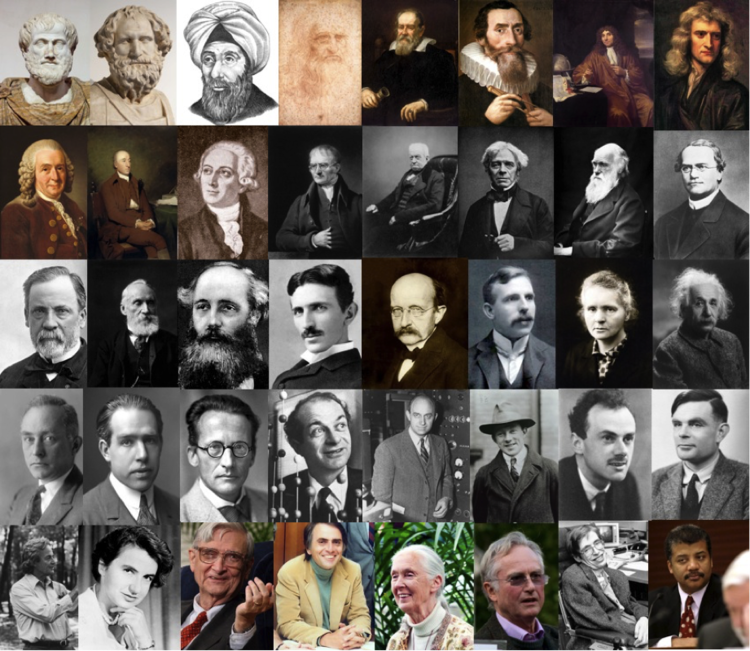
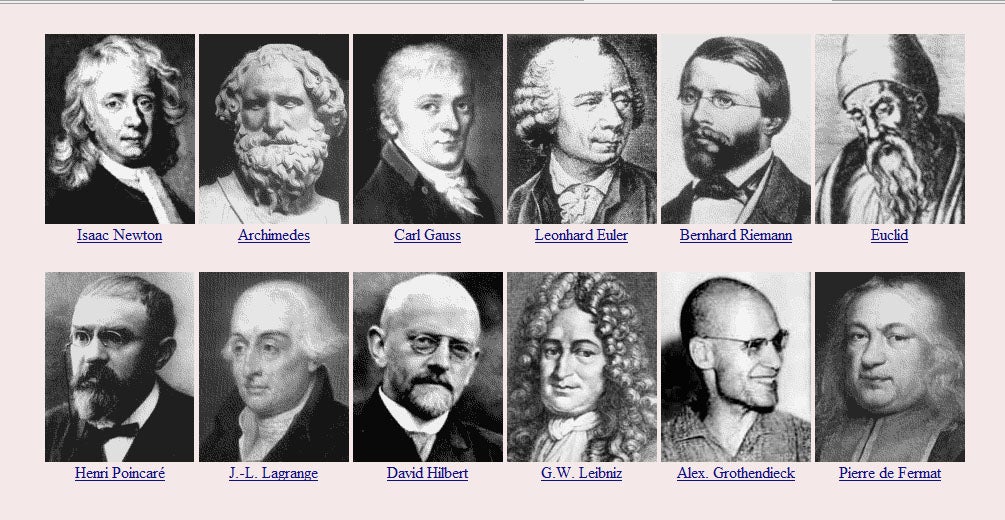

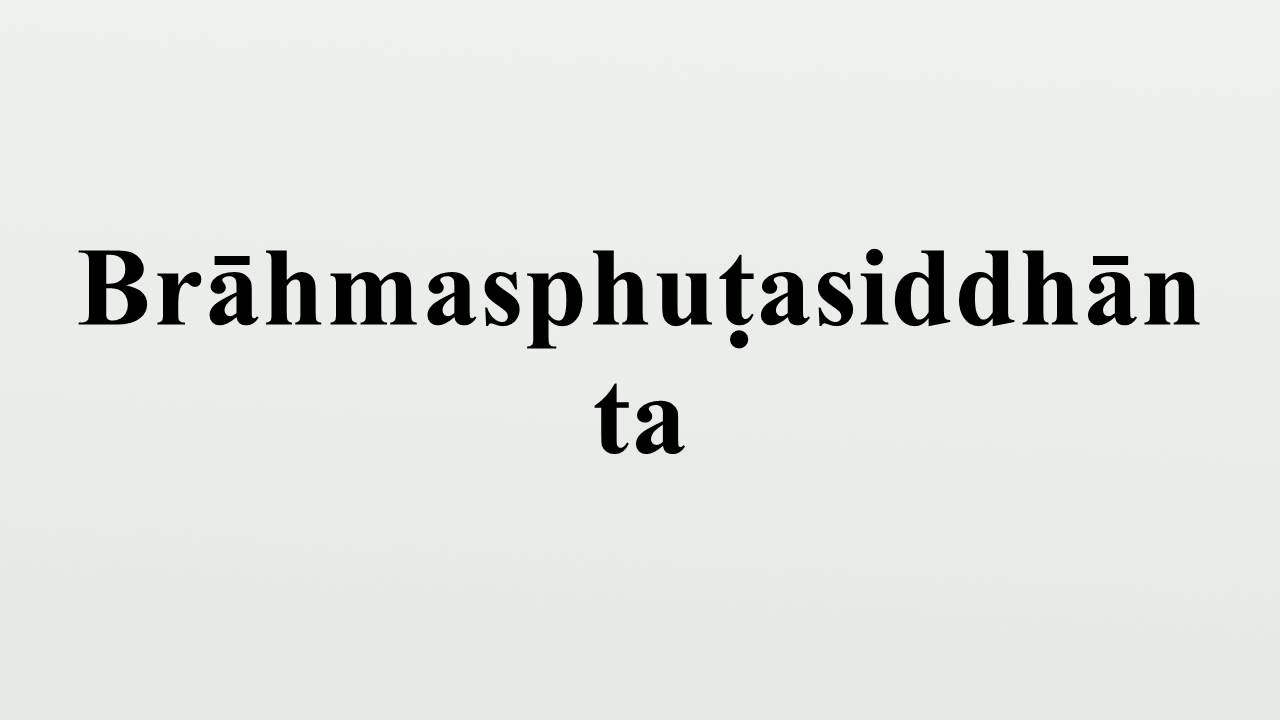
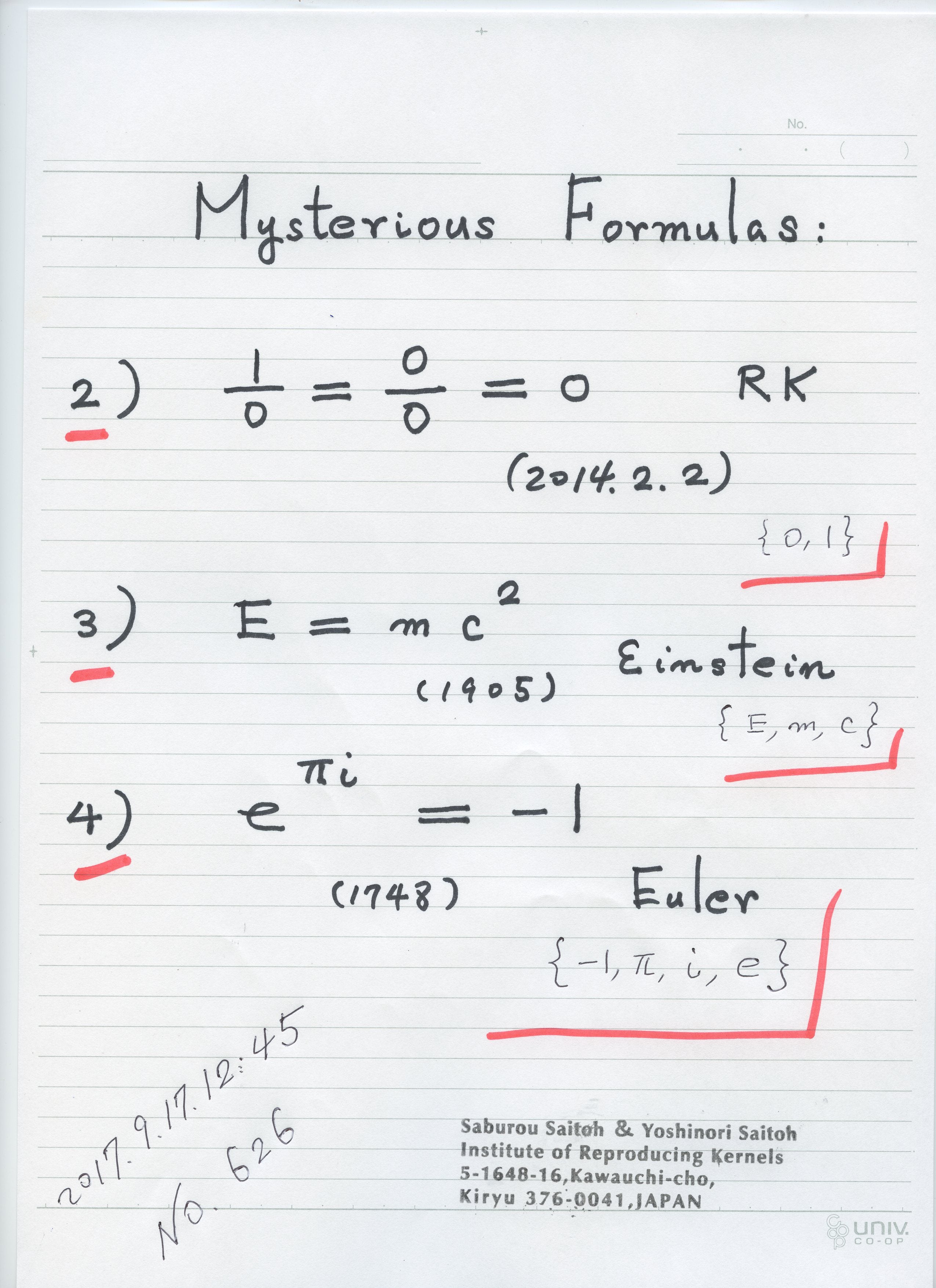

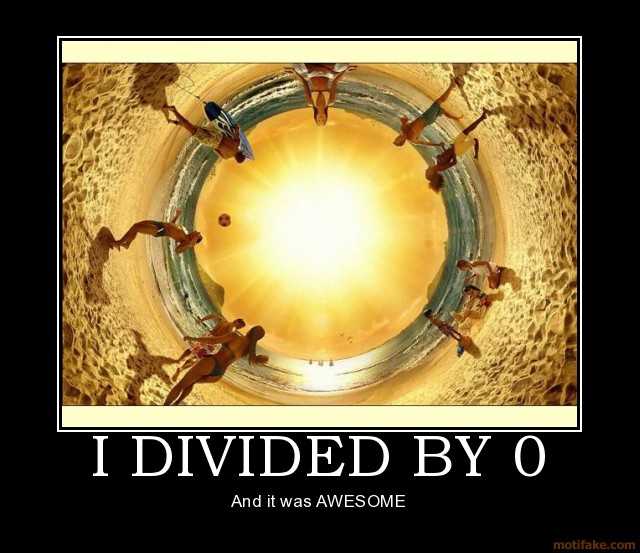








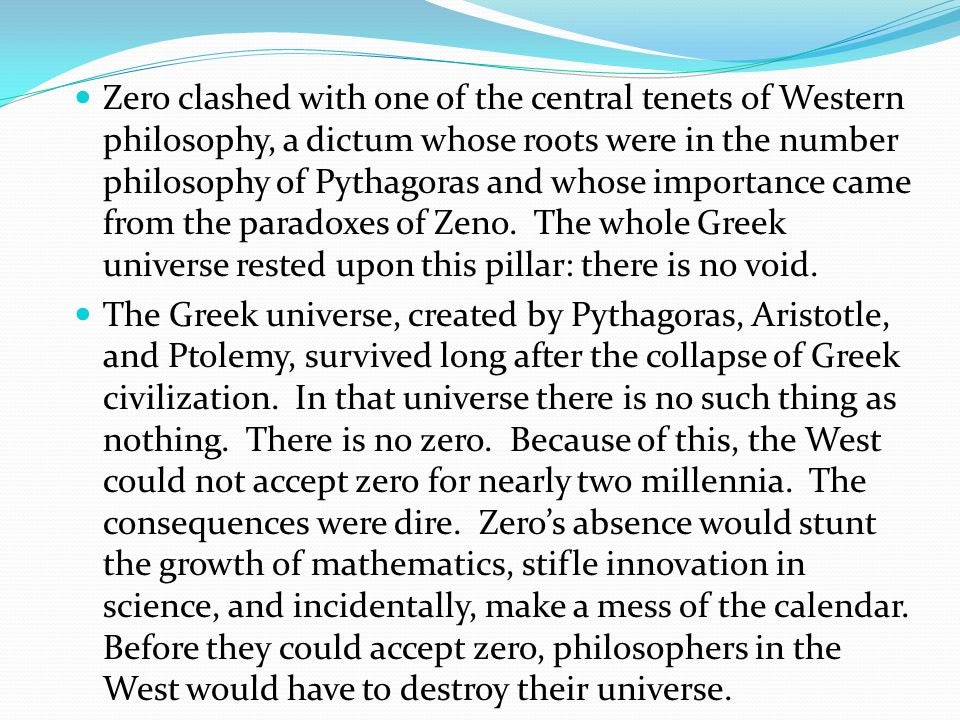
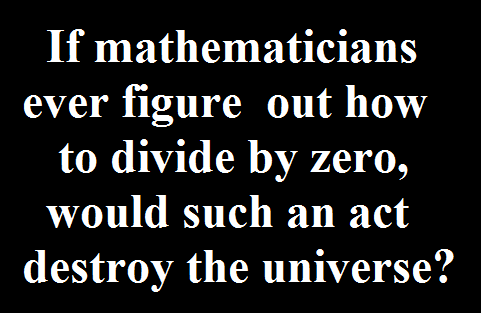
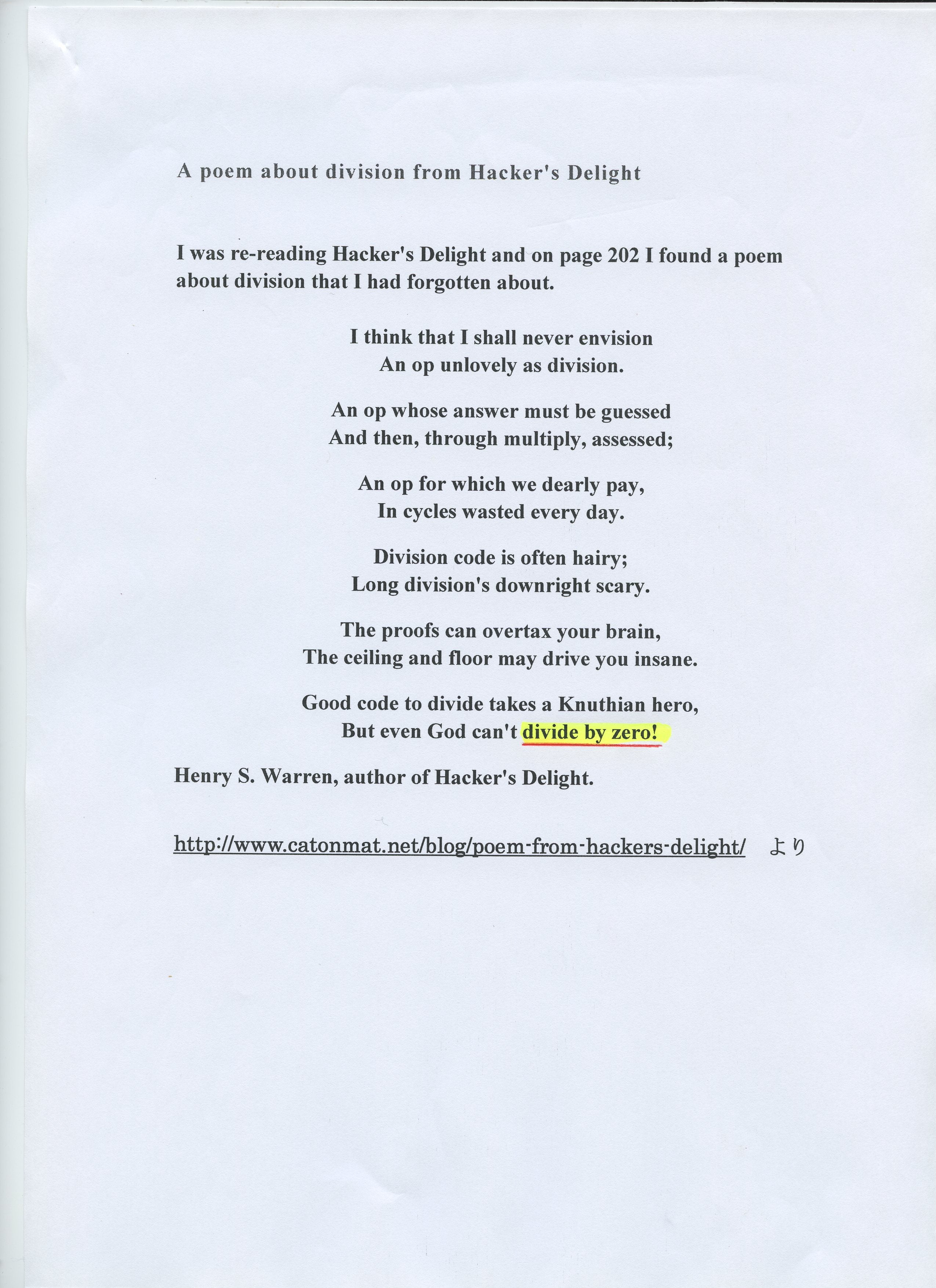
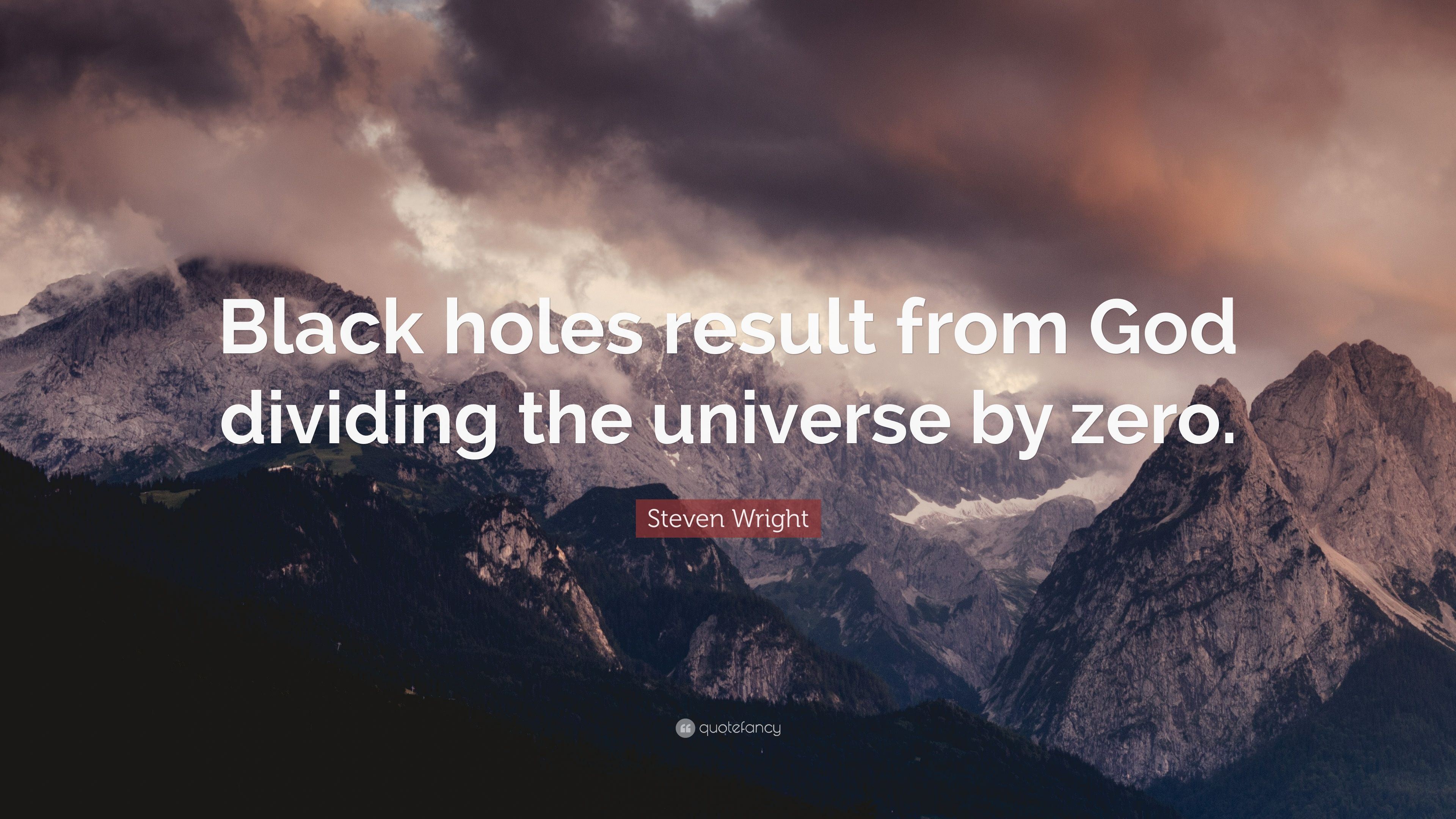



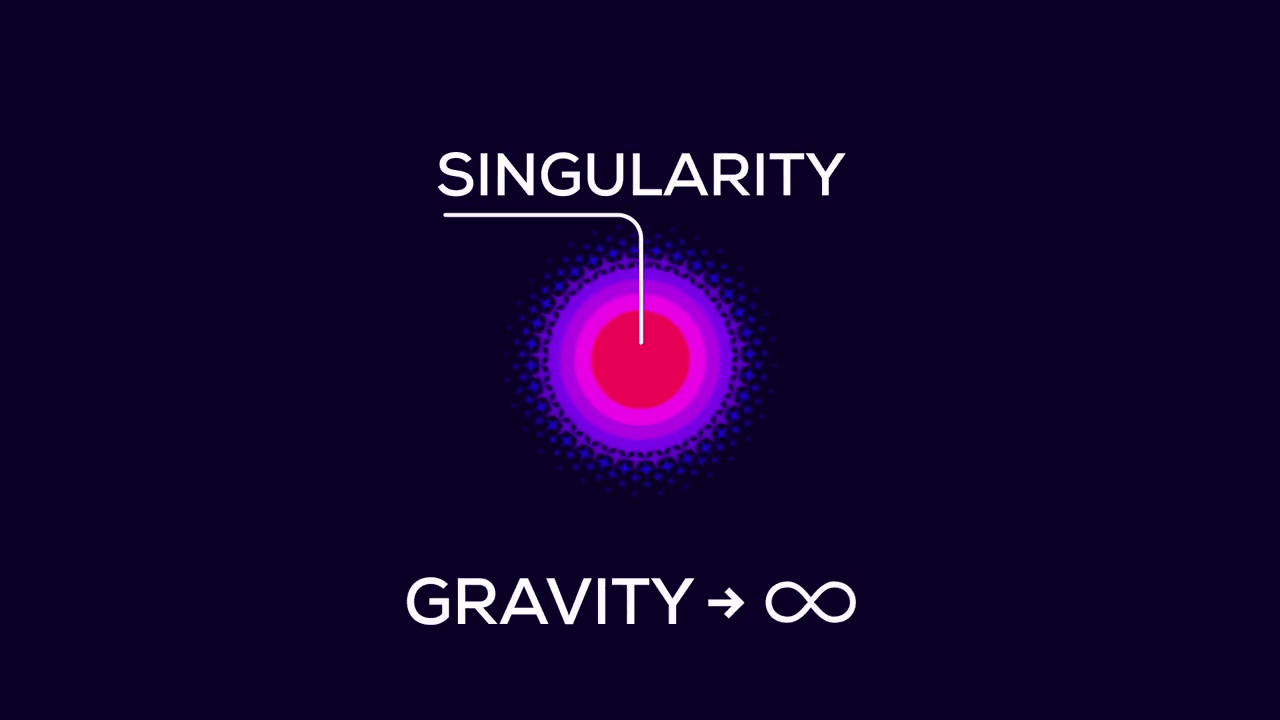













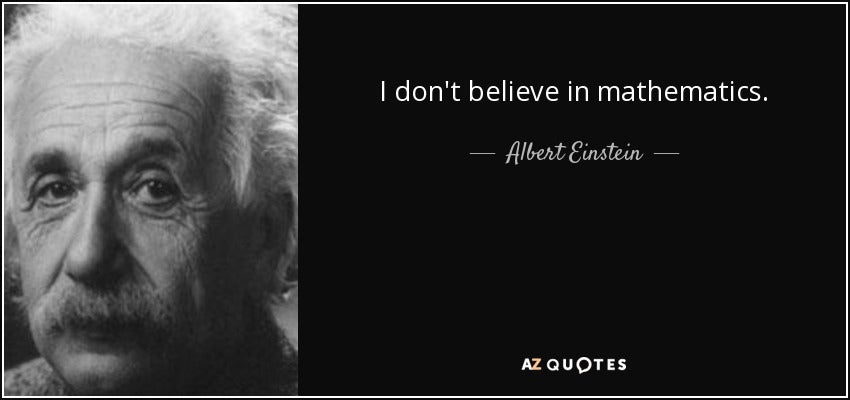

0 件のコメント:
コメントを投稿